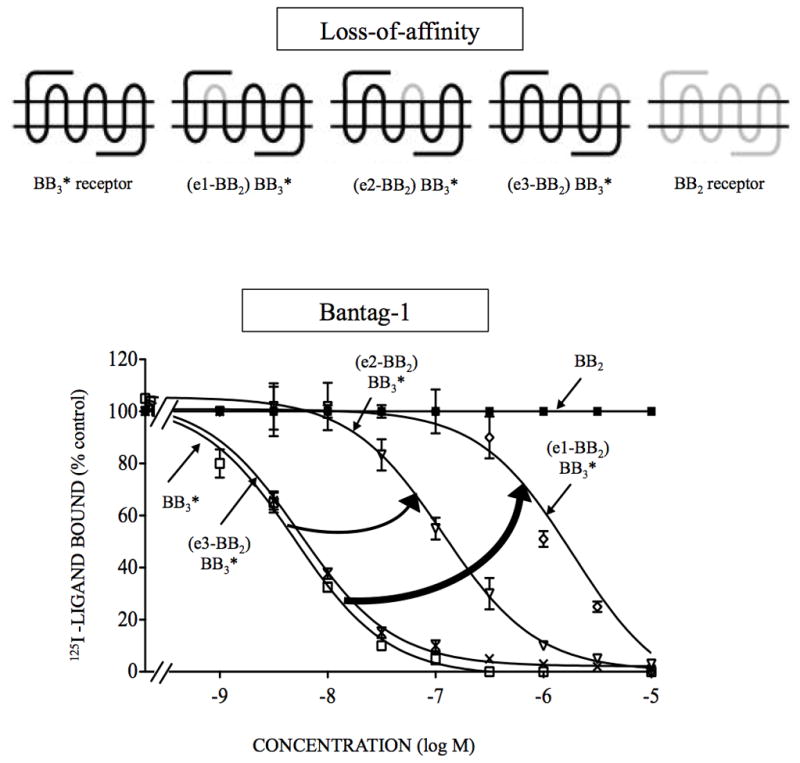Figure 2.

Affinities of the antagonist, Bantag-1 for loss-of-affinity BB3 chimeric receptors and BB2 expressed in CHOP cells. The diagrams of the chimeric receptors formed are shown at the top. The chimeric BB3 receptors were formed by replacing each of the extracellular domains of BB3* receptor one at a time by the comparable BB2 receptor extracellular domain as described in Material and Methods. The peptides were incubated with 50 pM 125I- [D-Tyr6, β-Ala11, Phe13, Nle14]Bn-(6–14) for 60 minutes at 21°C in 300 μl of binding buffer with BB3* receptor cells (1.1 x 106 cells/ml), (e1-BB2) BB3* cells (4.2 x 106 cells/ml), (e2-BB2) BB3* cells (4.8 x 106 cells/ml), (e3-BB2) BB3* cells (2.1 x 106 cells/ml) or BB2 receptor cells (7 x 106 cells/ml), and the saturable binding was determined as described under Materials and Methods. The results are expressed as the percentage of saturable binding without unlabeled peptide added (percentage control). The results are the mean and S.E.M. from at least three separate experiments and in each experiment the data points were determined in duplicated. The arrows indicate large changes in affinity from the BB3 receptor. Abbreviations: e or EC, extracellular; for other, Fig. 1 legend.
